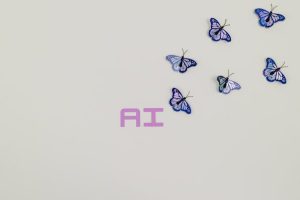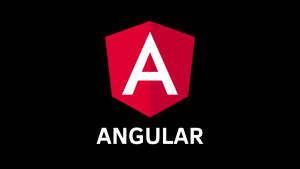Django Vs Ruby on Rails – Which Framework is Best for 2020 -2021

Although released in less than a year’s gap, both Django and Ruby on Rails are treasured as inexpensive and reliable frameworks for diverse kinds of web developments. It is relatively convenient for an expert to choose one between superb and inferior; however, things get tricky when you have two compelling options in hand.
Both Django and Ruby on Rails are holding a significant share of web frameworks standing at 14.2% and 7% respectively (as per Developer Stats). Thus, they are seemingly impressive options for any web project. They also share striking similarities of object-oriented features and are free from the explicit declaration of variables before use.
Their similarities makes it tough to choose one over the other. However, they also hold significant differences in terms of scalability, security, pros, cons, etc. Studying them in detail can help you in finding the best for a particular project.
To aid you in learning and finding the best between Django and Ruby on Rails, this blog will discuss the following essential points:
- A concise introduction of Django & Ruby on Rails.
- Pros and Cons of the two frameworks.
- What differentiates the two of them?
- When to choose one over the other?
So, do you know what exactly defines Django?
Maintained by Django Software Foundation, Django is a free to use, open-source, Python-based web framework. While being open-source offers cost-effectiveness, it also comes with a high level of security as its core language is Python. Django also offers reusability of codes which makes it a developer-friendly framework. Though you can also seek consultation from python web development companies in India as they offer cost-effective web development services as per the specific business needs.
To understand more about Django, have a look at its pros and cons.
Pros of using the Django framework
- Django is a battery- included framework, which means there are multiple code packages which the development team can easily import instead of writing one. For example, there are authentication, admin interfacing, session management packages available out there.
- Being based in Python language newbies find it easy to learn and comprehend it on a project.
- A highly scalable application can be developed by relying on separate servers for the media and database, or by distributing the whole software across multiple servers.
- It is a well-known fact that Python has a vast community of matured developers that can be connected at a cost or for free from multiple forums to seek solutions. So, Django enjoys pretty much the same.
- Django supports MVC structure which helps in quick implementation of business logic and also reduces dedicated time of development to a significant extent.
Cons of using Django
- It has a monolithic structure which reduces its flexibility. In simple as ABC, it means to modify a single feature one needs to alter the whole app as the user-interface, server-side, and relational database are tightly coupled.
- Django is not beneficial for small projects as vast functionalities, and a massive structure remains bound with the developed product.
That was all about the Django web framework. Let us focus on Ruby on Rails.
The Ruby on Rails Framework
The Ruby on Rails is an open-source server-side framework and gets based on the high-level language of Ruby. The framework uses a model view template and offers a default database and web structure to facilitate rapid web development.
The framework relies on multiple standard paradigms like DRY (don’t repeat yourself) and CoC (convention over control). While DRY is responsible for eliminating the need to write the same code now and then, the CoC takes care of reducing the number of conventional decisions.
These two paradigms are responsible for rapid web development when using Ruby on Rails. Let’s learn more about it by looking at its pros and cons.
Pros of using Ruby on Rails
- Availability of tons of plugins combined with DRY, CoC, ensures quick project completion saving time and money of those invested in the web project.
- Ruby on Rails facilitates easy updates of the software as code modification is plausible. Thus, it is recommendable for projects that need consistent improvements based on the user’s response.
- It offers optimum level of scalability to the developed software as horizontal scaling is employable. Horizontal scaling mainly involves placing the load balancer, app instances, and database instances on different servers.
- It supports test-driven development (TDD) which helps in trimming the development cost of the project.
- It offers high-quality libraries that ensure smooth development of the project.
Cons of using Ruby on Rails
- The speed performance of Ruby on rails is slightly compromised, especially when being compared with Django.
- Ruby on Rails comes with a steep learning curve which affects its popularity.
Having learned the pros and cons of the two frameworks, you must be having a clear idea of similarities and differences between the two of them. You may have a look at the most used web frameworks among developers worldwide, before we proceed to the differences between the two frameworks in detail.
Django v/s Ruby on Rails
| Point of difference | Django | Ruby on Rails | Result |
| Language | It gets based on Python, which is considered among the top programming languages worldwide as it offers readability and neat coding. | It gets based on Ruby, which was developed to make coding fun and offers freedom and flexibility to the users. | Tie |
| Time for project development | MVC structure offers rapid project development. | Along with MVP, it has CoC, DRY, plugins, etc. that leads to the rapid development of the project. | RoR wins |
| Speed Performance | It is renowned for high-speed performance. | The developed digital software slightly lags in speed performance. | Django wins |
| Scalability | Python offers high scalability as it provides both horizontal and vertical scaling. | Horizontal scaling is feasible. | Django leads here, but overall, it’s a Tie. |
| Security | Django offers a high level of security with SQL injection, cross-site scripting, etc. | Active files back it for high security. | Django leads but overall; it’s again a Tie. |
| User interface | Feasible to develop a fantastic user interface for the software. | High level of the user interface is possible with RoR too. | Tie |
| Installation | It will take fewer minutes to install Django. | It will be necessary to install gems and bundle first, and then you can install the latest version of RoR. | Django wins |
| Learning Curve | Django comes with a small learning curve. | RoR comes with a steep learning curve. | Django wins |
| Big Brands using it | YouTube, Instagram, Spotify, etc. | GitHub, Airbnb, SlideShare, etc. | You decide |
So, when its best to choose Django over Ruby on Rails:
- You have a team of experts in Python language.
- You are visualizing for maximum levels of security and scalability over the final software.
- You want to exercise a more incredible amount of control over the project development.
And, when it’s best to go for Ruby on Rails over Django:
- Rapid web development is the need of the project.
- Your project requires to undergo periodic modifications or updates based on the user’s response.
Final Words
The ultimate choice between the two will require you to weigh the project needs and compatibilities with each of the two frameworks. Luckily, for any last-minute doubts, you can opt for a complimentary consultation with firms that offer web application development in India.
As they have years of expertise in web development, they can clear your final doubts for a concerned project.






